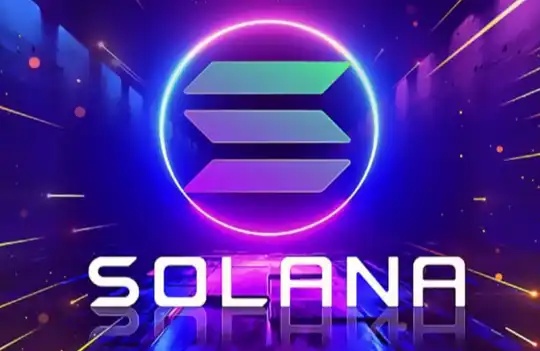Excessive block space and a reshuffling valuation logic.
Original Title: EXPECTED VALUE IN CRYPTO & BUILDING INFINITE BLOCKSPACE
Original Author: Michael Dempsey, CompoundVC
Original Translation: Kaori, BlockBeats
Editor's note: Michael Dempsey, MPMichael Dempsey of CompoundVC, believes that there are too many people in the new L1/L2/LST and other infrastructure, while there is a shortage of people trying to build new encryption applications. Therefore, he wrote an article to explain his expectations for the value of cryptocurrency and his views on the construction of unlimited block space. He focuses on why this situation occurs, how it occurs, and how we can solve this problem.
I recently re-read three excellent (in my opinion, well-written) early cryptocurrency posts that shaped many people's views on capturing cryptocurrency value (fat protocols, thin applications, cryptographic tokens, and the upcoming era of protocol innovation).

Through power law and normal distribution in cryptocurrency
The original Fat Protocol paper received a good understanding in terms of L1 value accumulation, but this also means that you see more long-tail dynamics in Dapps, which means that from the perspective of success opportunity percentage, there are fewer power laws (i.e. many tokens will be worth *something*, and few will go to 0, as I wrote before).

We have seen a shift in the way people perceive expected value in the bull market (and perhaps the entire cryptocurrency market).
This leads us to a logical conclusion: Today, most developers believe that the ultimate move in terms of Expected Value (EV) is to build new L1 or L2 solutions, rather than Dapps or application-centric protocols, which has led to further fragmentation of the world and a lot of wasted block space. They then take a downgrade approach, building abstraction layers to extract some of the value from L1/L2, such as in LST and other areas.

Some people may think that this dynamic is due to the cost structure and "defensiveness" of Dapps in cryptocurrencies relative to block space. As shown in the above data, L1 and L2 constitute the majority of accumulated economic value capture in today's cryptocurrencies. This, coupled with a deeper analysis of the business models of block space, explains the large-scale FDV of various L1s such as Ethereum (more practically, things like zombie L1s inserted here at this point) and smaller-scale dominant L2s like Arbitrum, as well as the premium on terminal networks obtained through cryptographic protocols. Speculators are willing to model the network scale and penetration rate for many years in the future and pay the price for it today, resulting in high multiples.

That is to say, when you view the 365-day cost tracking of all protocols on Token Terminal, this is somewhat impractical in terms of usability, as the speed of various DeFi protocols far exceeds that of higher-value block space.
Of course, the cost in 2024 is not a perfect measure, as there are many other value determining factors, including defensibility, terminal scalability, net profit of the protocol, and even the theoretical ability of the token to capture fund flows.
We have seen the latter recently conduct its first test by initiating the proposal of accumulating UNI fees. As the market re-evaluates the possibility of obtaining tangible value from "worthless governance tokens," a wave of trading in other DeFi protocols has also rapidly increased.
So, yes, blockchain space is a good business (perhaps a clean business with lower regulatory barriers), but if we uncover the veil of ignorance, the reality is that there is a flywheel effect between founders and investors today, or a perverse incentive mechanism of a vicious cycle, which has led to the continuous creation of blockchain space.
Big Fund Phenomenon
Investors need to raise more funds and deploy them in order to seek greater returns. This strategy is most easily implemented by investing in capital-intensive projects. All of this capital needs to find a return in order to justify the creation and liquidity of a multi-billion dollar FDV.
We can view the top 100 tokens by market capitalization and see that the red ones belong to this framework. As people can see, few protocols worth billions of dollars are not effective new block space or do not absorb infrastructure value. If you use FDV instead of market capitalization, the situation will not be better.
For people like me (and our company Compound) who hope to see the long-term prospects of cryptographic materials in the world, I believe that the venture capital and founder block space inflation cycle will erode the ecosystem (some people may think it has already happened) and may lead to louder overall and modular chain debates, which are actually not important and have made almost no progress.

Each cycle we will get new block space, and underutilized L1 and L2 will experience some value erosion. Perhaps from time to time, new value captures that look very similar to L1 narratives (data availability, re-staking, etc.) will insert themselves into a slightly smaller flywheel, followed by a wave of imitators and the nth version of these protocols, descending down the "incredible billion-dollar FDV token roller coaster".
The best part is that these tokens may still be more valuable than real applications with actual utility and practical use cases.
This type of dynamic existence is a net negative for cryptocurrency, and there are two reasons for this:
1) Due to the fact that the capital market prefers existing scripts and the risk/return is biased towards the downside, it hinders new experiments.
2) It only slightly increases the adoption rate of cryptocurrencies.
Once upon a time, there were many areas in the infrastructure field that needed innovation. We needed more block space, faster virtual machines, better fiat-to-crypto on-ramps, and better wallet onboarding, among other things, in order to enable new use cases. Now we are in a state where we are no longer limited by technology.
You can basically build anything you want on-chain for early adopter types (of which there are many) and soon for early majority/majority type users in most parts of the world.
Constantly Changing Expected Value
If we take a step back and think about how to change people's expectations of the value of cryptocurrency, we can substantially change the development trajectory of cryptocurrency, rather than just slightly pushing the industry forward.
These subsequent steps have approximately three clear and logical paths, ideally leading to obtaining value in a more diverse way and building meaningful protocols and Dapps.
1. Effective duopoly/oligopoly of the underlying chain
With the transformation of smartphones and each OEM having their own operating system and application ecosystem, mobile devices have gone through a paradigm similar to that of cryptocurrencies today. Blackberry, PalmOS, Windows Phone, Android, iOS, and many other operating systems all meant that the desire for a phone + operating system combination was fragmented. Eventually, the dominant ecosystems of iOS and Android emerged.
Many people have compared Solana to Ethereum (because Android has various software branches, the value of the Google Play store accumulates in a way similar to the EVM's operation, and the value can be accumulated from L2/L3 to ETH's settlement layer) ETC.
This will lead to +EV and what needs to be done is to develop Dapps that are dominated by duopoly (or both), as well as fragment solvers such as Restake and things like Chain-Clusters from Arbitrum Research to capture value.





Madness is doing the same thing over and over again, but expecting different results.
Welcome to join the official BlockBeats community:
Telegram Subscription Group: https://t.me/theblockbeats
Telegram Discussion Group: https://t.me/BlockBeats_App
Official Twitter Account: https://twitter.com/BlockBeatsAsia


 Forum
Forum Finance
Finance
 Specials
Specials
 On-chain Eco
On-chain Eco
 Entry
Entry
 Podcasts
Podcasts
 Activities
Activities
 OPRR
OPRR








